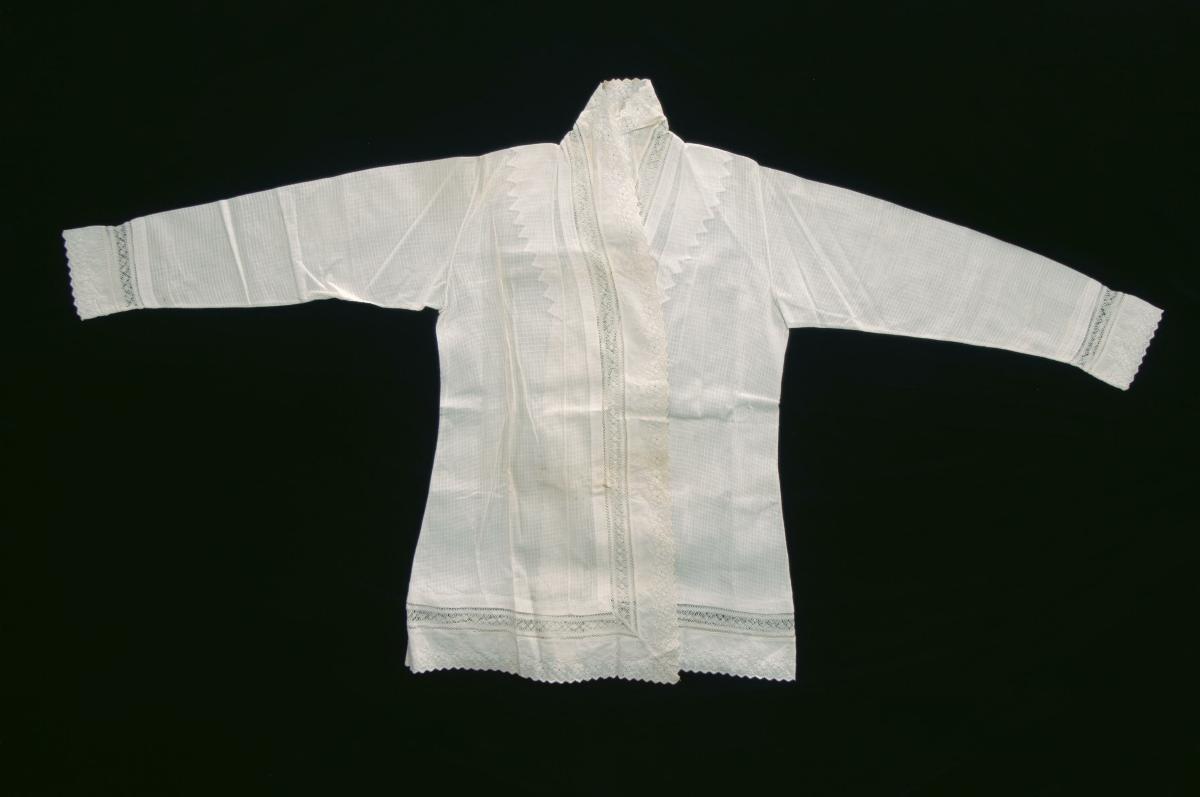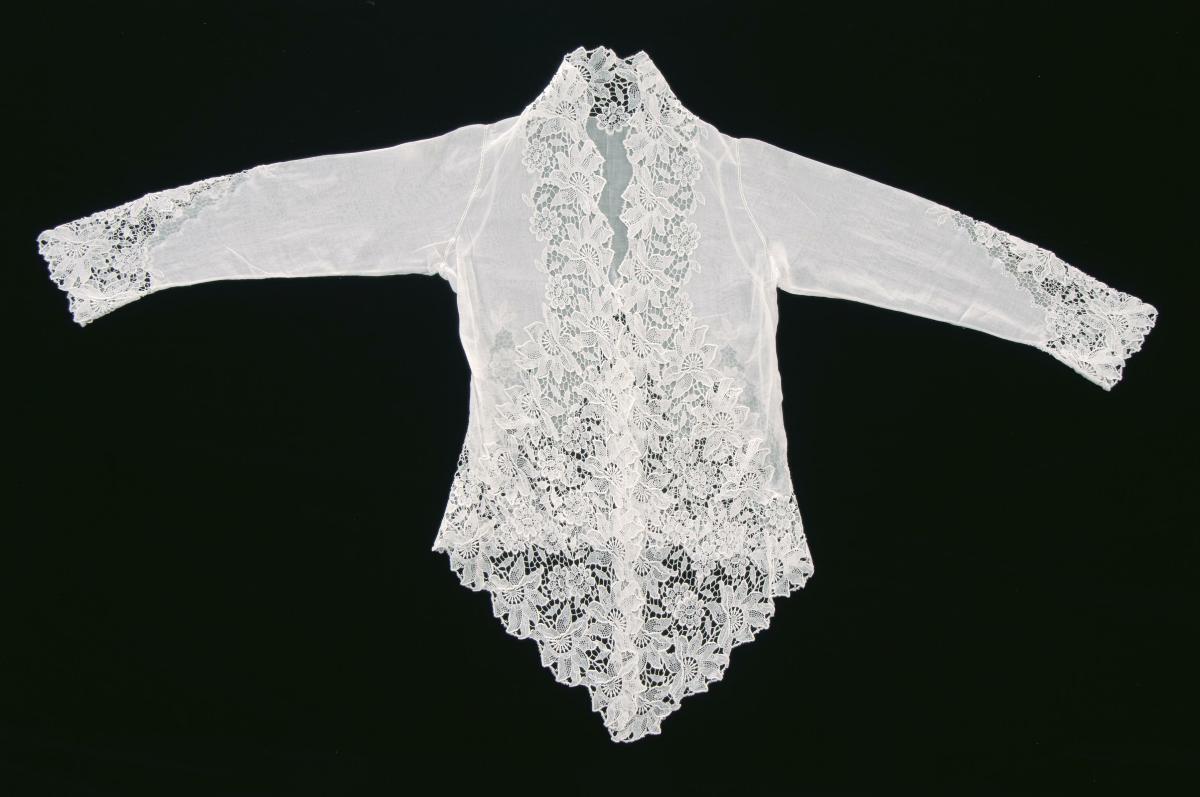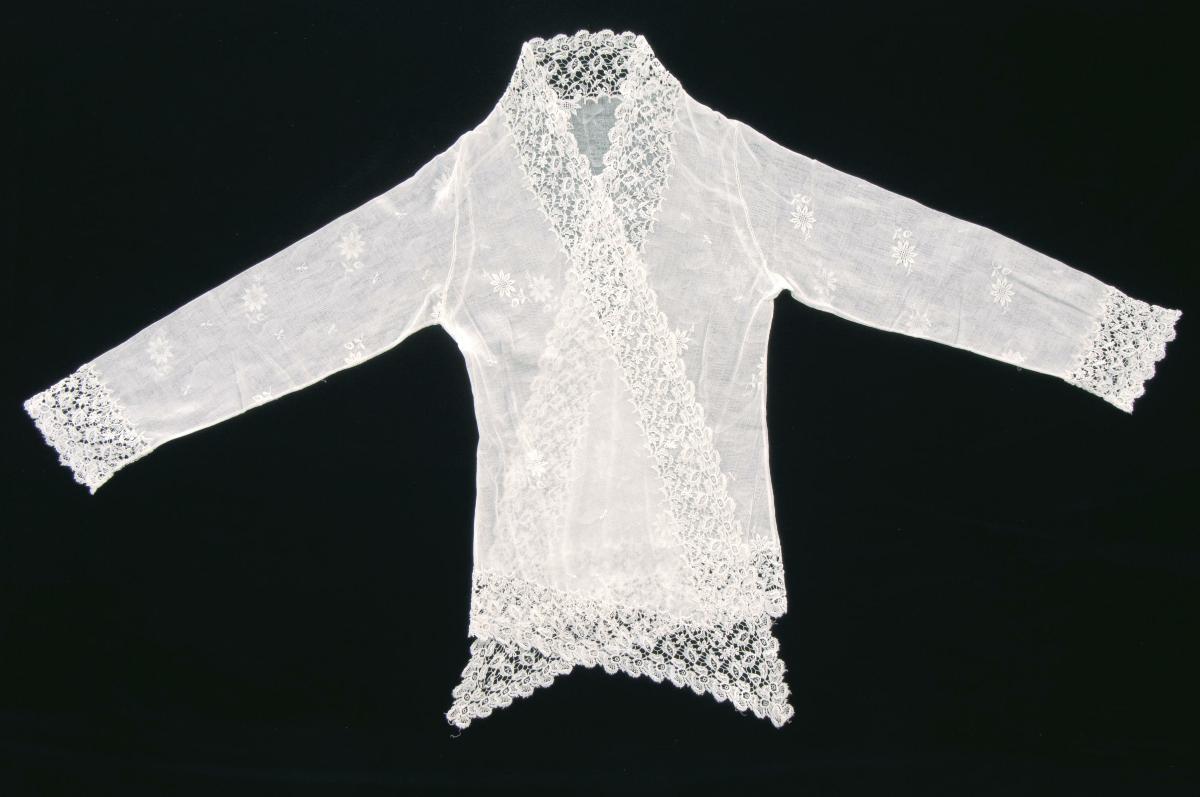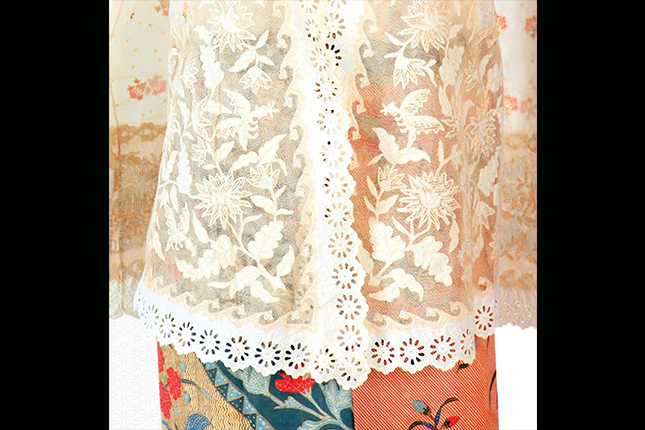The kebaya is a long sleeved garment reaching to around the waist and open in the front. The frontal hems are secured by a set of usually three kerosangs or jewelled brooches connected together by short chains. This garment is believed to have been derived from the ancient ‘qaba’, an Islamic robe worn by rulers across the Middle East since the ninth century. It is thought to have appeared in the Dutch East Indies, in particular Medan and Batavia, about the time of the First World War. White lace kebayas such as this were favoured by Nonyas and Indo-European ladies of that region. This piece has a simple design comprising of embroidered floral motifs running down the frontal hems as well as at the edge of the sleeves. A kebaya is usually worn with an inner camisole and paired with a sarong, which is a rectangular piece of dyed cotton cloth worn as a skirt by wrapping it around the waist. Together, the sarong kebaya became a distinct part of the identity of Peranakan women.

















